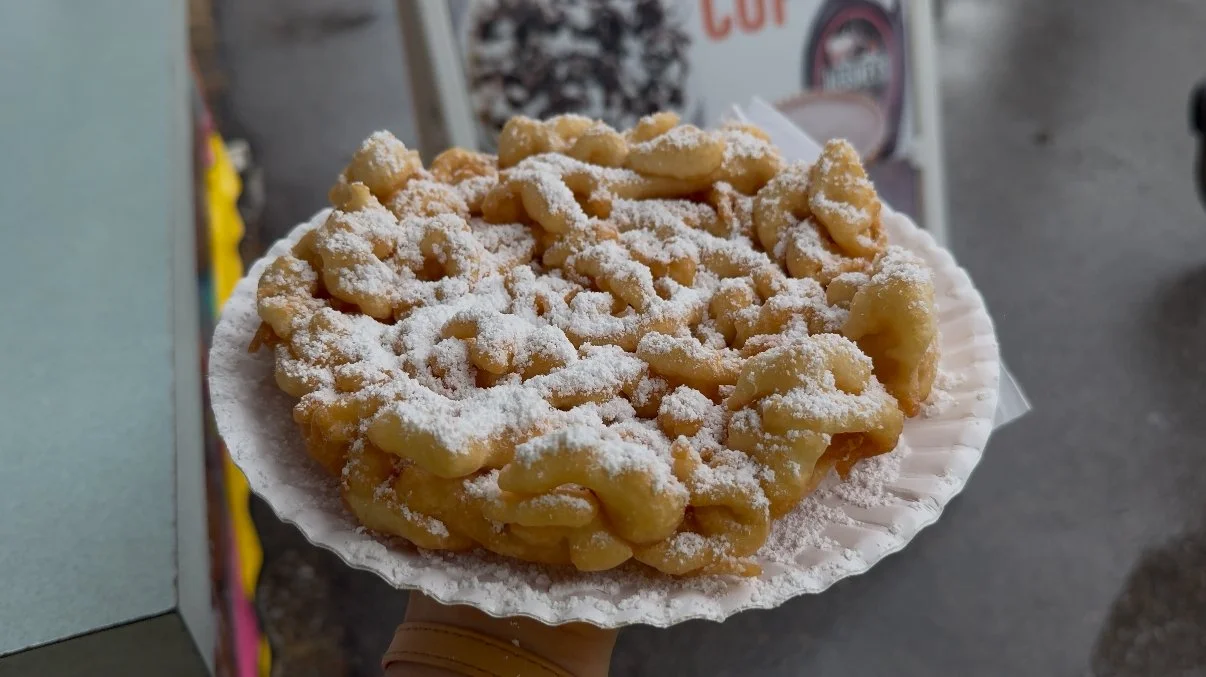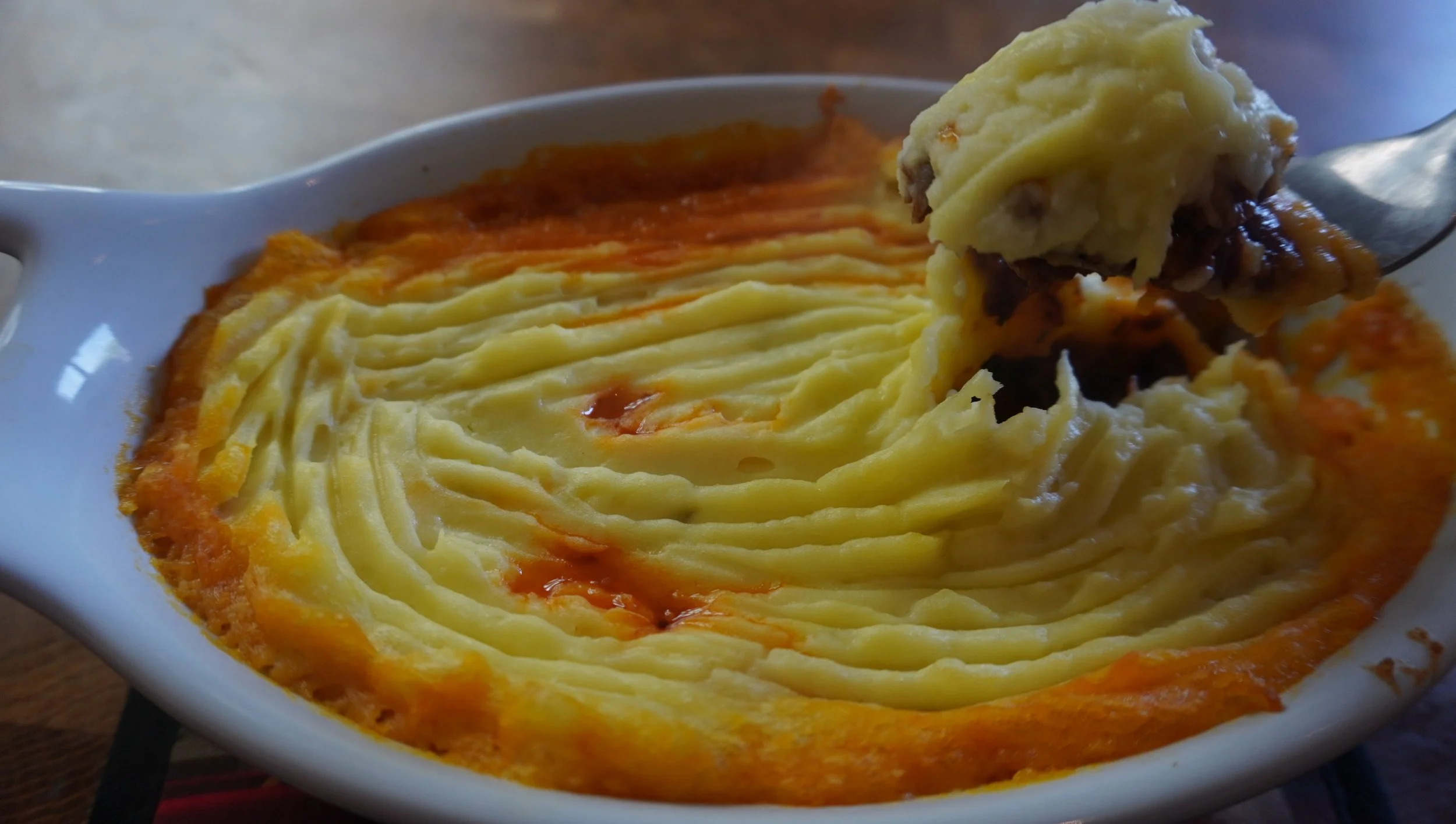This Food in History #23 Funnel Cake
Hello and welcome to this episode of This Food in History! Today we are still dabbling in fair and carnival food with one of my favorite fair desserts, funnel cake! A staple dessert across the states in county fairs, state fairs, street fairs, sports bars, and anywhere food trucks gather. How do we evolve frying doughs and batters to come up with funnel cakes?
My history of beignets video gives a bit about the history of fried doughs and donuts, and my pastry video touches a bit on the parts a bit before that. To do a fast recap for those not wanting to wander in other videos: We want to thank China and Egypt for the invention of pastry and fried cakes, Rome for expanded baking methods including deep frying in animal fat, and finally Medieval people for donuts that were precursors for most well known deep fried dough based treats.
Now how to address the evolution of funnel cakes, a divergent line of this deep fried dough family tree?
The earliest reference from a Eurocentric view I found is with the Anglo-Normans. After searching the phrase, I learned this was a ruling class after Normandy conquered the Kingdom of England in 1066 under the Duke of Normandy, William. Descended from vikings, and settled in Northern France, we have cooking manuscripts that have a funnel cake variant called micebek, mistembec, or cryspes. The 2 former come from French language culture. Mis em bec translates to “put in spout” which is a method of pouring the batter for funnel cakes. A familiar cookbook, the Forme of Curry from 1309 AD has a recipe for nysebek.
At this point, we’re looking at a fritter that was made by pouring sourdough or yeast batter through a small hole cut into the bottom of a container. Pour this into a medieval deep fryer and you get yourself a fritter cake. They would serve this with sugar syrups and salt.
Though here’s the snag on this part of history. It’s not necessarily the earliest nor the place the variant started from. For that, we want to stay in the medieval times, but instead of looking at Anglo-Normans, we’re going to jump over instead to Persia and the Arabic countries.
We’re going to start with Zalabiyeh which is also called zoolbeyah, zoolbia, zulbia, zalabia, zellabiya, Jalebi, Jilapi, mushabak, and Zolo-biya in the book One Thousand and One Nights that was compiled between the 8th and 14th century. This pulls in from Arabic, Turkish, Persian, Indian, Greek, and Jewish cultures. Zalabiyeh et al is deep fried dough poured in circular shapes, then dipped in sugar syrups, or honey, or sometimes rose water. They also get spiraled when served as street food, or overlapping into small little ant hill-like structures. Some make them into pretzel shapes. While we can find the earliest known recipe officially in a 10th century cookbook it is definitely found from India through East Asia and Northern Africa. South Africa has koeksisters that are a braided donut look.
The Indian Zolbia variant traces back to around 1450 AD. Nasserite history mentions the dish as a gift to Nasser al-Din Shah.
The roman scriblita can be found described in 2nd century BC texts, but doesn’t use the funneling method. They spooned the dough lumps into hot fat to get random shapes. This is likely one precursor for Europe.
We also have other variants in Finland’s tippaleipä, a small flower shaped version, and the German Striebele which can also be traced back centuries.
You can find a version of funnel cake all over the world. Churros from Latin and Spanish cultures, bolinho de chuvas from Brazil, the Lithuanian skruzdėlynas, the Armenian mrjnabuyn, and the Dutch drechderkuche. It is hard to pinpoint who really gets the credit as so many countries have cultures that developed fried dough cooked in hot fats and oils.
The America funnel cake, then evolved thanks to the Germans and Dutch immigrants. When we jump into America and their history with funnel cake, we find one main story looking to claim credit. That story is that the Pennsylvania Dutch immigrants brought their drechderkuche and in 1879 they adjusted to a baking powder version and adjusted the name to funnel cake. This is the earliest recipe version that can be found in a German cookbook in the states. Ladies Home Journal has a published recipe for sweet raglets in 1898 which is another name. We also have mention in 1916 in a recipe used by Lizzie Brendle Weinhold in Lancaster PA.
A common source for the popularity and spread of funnel cake out of the Pennsylvania Dutch is the Kutztown Folk Festival. This festival was started in 1950 by a group of professors that wanted to create a folklore center at Franklin and Marshall College in Lancaster. The festival was the first of its kind to promote national interest in a specific region of American culture. The culture gets covered from food to religion with demonstrations and storytelling. Though it is known that the journalists at the time helped spread information that was inaccurate and by 1960, the festival had nearly 100,000 people visit so some facts did not get straightened out.
So what does this have to do with funnel cakes? Well, be prepared to be shocked BUT, they were served there. They were ridiculously popular as well. Grace Merkel Henninger tells the story of making the cakes with her friends Stella Heinly, and Emma Miller. Miller gave them the recipe that she used every winter holiday for her family. They had a stand that allowed them to make four cakes at a time and sold for 25 cents. It grew to be a trademark dessert at the festival just in that first year.
Let’s pause on one tidbit from there. Miller made them in the winter holiday season because the cakes actually were a holiday food like yule logs, or stuffing, and pumpkin pie. It was a family recipe type treat but rarely made as it used eggs and fresh eggs were rare in winter months. Christmas, New Years and Shrove Tuesdays were common times to enjoy it, if you had them at all. But that all changed thanks to the Kutztown Folk Festival. The popularity brought with it an explosion and inclusion in cookbooks, a scarcity prior to the 1950s, and it brought a deeper association and larger place in the Pennsylvania Dutch culture lore. The fact that most families rarely ate the treat no longer mattered.
I found mention of a town in New Jersey that also wants claim to the funnel cake’s origin, but one thing is definitely certain, after the mid 20th century, they grew in popularity and started spreading amongst the American people. Until it became a staple food that you can expect to find at any fair or carnival in America. You’ll find versions that are topped and smothered in ice creams, fruits, syrups, sugars, cinnmon, candy bars, and even savory editions. You can find funnel cake that is larger than the plate, or small and hand held. There’s many ways to enjoy it, just as there’s many cultures world wide that prepare dough funneled into hot oils and fats to bring smiles to the people.
This has been This Food in History. I’m Soph, please like and subscribe for more!
Cites
https://huntvalleylife.town.news/g/timonium-md/n/117662/story-about-funnel-cakes
https://greatist.com/live/history-of-state-fair-funnel-cake-recipe-make-it-at-home
https://www.loudounmuseum.org/post/retro-recipes-sweet-raglets-funnel-cake
https://www.awpnow.com/main/2023/05/19/the-history-of-the-funnel-cake/
https://funnelfare.com/funnel-cake-catering-for-your-events/
https://falasteenifoodie.com/mushabak-halabi-middle-eastern-funnel-cakes/
https://www.schmeck-den-sueden.de/rezept/striebele-alias-straiben-strieble-straeubele-strieble-etc/




